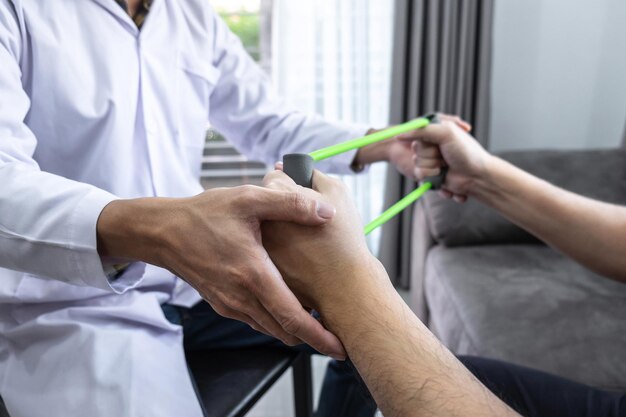Understanding and Identifying Arthritis: What You Need to Know
Feeling stiff in the morning or noticing a persistent ache in your joints? You’re not alone. These might be indicators of arthritis, a prevalent condition affecting millions worldwide. But how can you know if your discomfort is indeed arthritis, and what steps should you take to confirm your suspicions? In this detailed guide, we'll explore how to check for arthritis and what options are available to help you move forward with confidence.
What is Arthritis?
Arthritis is not a single disease; rather, it's an umbrella term that refers to over 100 types of joint-related conditions. These conditions often cause pain, swelling, and stiffness in various joints throughout the body. The most common forms of arthritis include osteoarthritis and rheumatoid arthritis, each presenting its unique challenges.
Osteoarthritis vs. Rheumatoid Arthritis
- Osteoarthritis (OA) is often due to the wear and tear of joint cartilage over time, typically affecting weight-bearing joints like the hips, knees, and spine.
- Rheumatoid Arthritis (RA) is an autoimmune disorder where the body's immune system mistakenly attacks the joints, leading to inflammation and pain. Unlike OA, RA can affect multiple joints simultaneously and symmetrically.
Understanding these differences is crucial in checking for arthritis and seeking the proper evaluations and treatments.
Recognizing Early Symptoms
Identifying arthritis early can make all the difference in management and quality of life. Here are some common symptoms to look out for:
- Persistent Joint Pain: Chronic discomfort in one or more joints is a hallmark sign.
- Stiffness: Especially noticeable upon waking up or after sitting for long periods.
- Swelling and Tenderness: Joints may appear swollen or be sensitive to the touch.
- Reduced Range of Motion: Difficulty moving the joint through its full range.
- Warmth and Redness: Particularly in rheumatoid arthritis, affected joints may be warm and appear reddish.
When to Seek Professional Help
While some of these symptoms might be manageable at home, persistent or severe cases warrant a professional evaluation. If you experience the following, it’s advisable to schedule a visit to a healthcare provider:
- Sudden Onset of Symptoms: Abrupt joint pain or swelling.
- Fever: Often associated with rheumatoid arthritis.
- Disabling Pain and Inability to Perform Daily Tasks: If your symptoms affect your daily activities significantly.
- Multiple Joint Pain: More than one swollen or tender joint at a time.
How to Check for Arthritis at Home
Before hitting the doctor’s office, you might want to perform an informal check at home. While this is no substitute for professional diagnosis, it can provide initial insights.
Self-Assessment Techniques
- Range of Motion Test: Gently move the joint in different directions and note any pain or stiffness.
- Look for Swelling or Redness: Visually inspect the area for any signs of inflammation.
- Monitor Symptoms Over Time: Keep a journal of symptoms, noting when they occur and their severity.
- Check for Morning Stiffness Duration: Time how long stiffness lasts after waking.
Professional Diagnosis
Once you’ve gathered enough information at home, the next step is a professional assessment. Healthcare providers use several techniques to diagnose arthritis accurately:
Medical History and Physical Examination
- Detailed Historical Review: Discuss your symptoms' history, family medical history, and potential risk factors.
- Physical Examination: Evaluate swelling, warmth, and range of motion in affected joints.
Diagnostic Tests
- Blood Tests: Can detect inflammatory markers and specific antibodies associated with arthritis types.
- X-Rays or MRIs: Imaging tests reveal joint damage and cartilage loss.
- Arthrocentesis: Withdrawal of joint fluid for analysis can pinpoint certain types of arthritis.
Managing Arthritis: Next Steps
Diagnosing arthritis is merely the first step in a longer journey. While treatment plans should be tailored by medical professionals, understanding general strategies is empowering.
Lifestyle Adjustments
- Maintain a Healthy Weight: Reduce stress on weight-bearing joints by eating a balanced diet.
- Regular Exercise: Low-impact exercises like swimming or cycling improve joint function and reduce stiffness.
- Joint Protection Techniques: Use braces or adaptive devices if necessary to avoid further joint stress.
Monitoring and Ongoing Care
- Consistent Check-Ups: Follow-up appointments allow your healthcare provider to adjust your treatment plan as needed.
- Symptom Logging: Continuously document your symptoms and share new developments or concerns with your healthcare provider.
Psychological and Social Considerations
Living with arthritis affects more than just the physical body; it often carries emotional and social implications.
Emotional Well-being
- Stress Management: Practice techniques such as mindfulness or yoga.
- Support Groups: Connect with others facing similar challenges for emotional support.
Social Adaptation
- Open Communication: Talk to family and friends about your experience and needs.
- Workplace Adaptation: Discuss necessary accommodations with your employer.
Recognizing arthritis's wide-ranging impact can help you implement holistic strategies for management.
By understanding the symptoms, identifying when to seek help, and learning about diagnostic processes, you equip yourself to take proactive steps in addressing joint pain. While only a healthcare professional can confirm an arthritis diagnosis, by paying attention to your body and its signals, you can embark on a path toward effective management and a better quality of life.
Key Takeaways for Checking Arthritis
- 🧐 Recognize Early Symptoms: Persistent pain, stiffness, and swelling.
- 🏠 Self-Assess at Home: Monitor symptoms, test range of motion, and note swelling.
- 👨⚕️ Seek Professional Evaluation: Don’t delay if symptoms worsen or hinder daily activities.
- 🩺 Consider Diagnostic Tests: Blood tests and imaging for accurate identification.
- 🌟 Lifestyle and Management: Prioritize exercise, weight management, and joint protection.
- 🤝 Support System: Leverage emotional and social support for comprehensive care.

Related Articles
- Are Bananas Bad For Arthritis
- Are Tomatoes Bad For Arthritis
- Can An Inflamed Nerve Cause Arthritis
- Can Arthritis Be Cured
- Can Arthritis Be Reversed
- Can Arthritis Become Septic After Infection From Injection
- Can Arthritis Cause Numbness
- Can Arthritis Cause Swelling
- Can Cracking Knuckles Cause Arthritis
- Can Cracking Your Knuckles Cause Arthritis